Revisiting The Rise and Fall of the Third Reich
Recently reissued, William L. Shirer’s seminal 1960 history of Nazi Germany is still important reading
/https://tf-cmsv2-smithsonianmag-media.s3.amazonaws.com/filer/Presence-of-Mind-Hitler-rally-Nuremberg-631.jpg)
Nineteen sixty: Only 15 years had passed since the end of World War II. But already one could read an essay describing a “wave of amnesia that has overtaken the West” with regard to the events of 1933 to 1945.
At the time, there was no Spielberg-produced HBO “Band of Brothers” and no Greatest Generation celebration; there were no Holocaust museums in the United States. There was, instead, the beginning of a kind of willed forgetfulness of the horror of those years.
No wonder. It was not merely the Second World War, it was war to the second power, exponentially more horrific. Not merely in degree and quantity—in death toll and geographic reach—but also in consequences, if one considered Auschwitz and Hiroshima.
But in 1960, there were two notable developments, two captures: In May, Israeli agents apprehended Adolf Eichmann in Argentina and flew him to Jerusalem for trial. And in October, William L. Shirer captured something else, both massive and elusive, within the four corners of a book: The Rise and Fall of the Third Reich. He captured it in a way that made amnesia no longer an option. The issue of a new edition on the 50th anniversary of the book’s winning the National Book Award recalls an important point of inflection in American historical consciousness.
The arrest of Eichmann, chief operating officer of the Final Solution, reawakened the question Why? Why had Germany, long one of the most ostensibly civilized, highly educated societies on earth, transformed itself into an instrument that turned a continent into a charnel house? Why had Germany delivered itself over to the raving exterminationist dictates of one man, the man Shirer refers to disdainfully as a “vagabond”? Why did the world allow a “tramp,” a Chaplinesque figure whose 1923 beer hall putsch was a comic fiasco, to become a genocidal Führer whose rule spanned a continent and threatened to last a thousand years?
Why? William Shirer offered a 1,250-page answer.
It wasn’t a final answer—even now, after tens of thousands of pages from scores of historians, there is no final answer—but Shirer reminded the world of “what”: what happened to civilization and humanity in those years. That in itself was a major contribution to a postwar generation that came of age in the ’60s, many of whom read Shirer as their parents’ Book of the Month Club selection and have told me of the unforgettable impact it had on them.
Shirer was only 21 when he arrived in France from the Midwest in 1925. Initially, he planned to make the Hemingway-like transition from newsman to novelist, but events overtook him. One of his first big assignments, covering Lindbergh’s landing in Paris, introduced him to the mass hysteria of hero worship, and he soon found himself covering an even more profoundly charismatic figure: Mahatma Gandhi. But nothing prepared him for the demonic, spellbinding charisma he witnessed when he took up residence in Berlin in 1934 for the Hearst newspapers (and, later, for Edward R. Murrow’s CBS radio broadcasts) and began to chronicle the rise of the Third Reich under Adolf Hitler.
He was one of a number of courageous American reporters who filed copy under the threat of censorship and expulsion, a threat that sought to prevent them from detailing the worst excesses, including the murder of Hitler’s opponents, the beginnings of the Final Solution and the explicit preparations for upcoming war. After war broke out, he covered the savagery of the German invasion of Poland and followed the Wehrmacht as it fought its way into Paris before he was forced to leave in December 1940.
The following year—before the United States went to war—he published Berlin Diary, which laid out in visceral terms his response to the rise of the Reich. Witnessing a Hitler harangue in person for the first time, he wrote:
“We are strong and will get stronger,” Hitler shouted at them through the microphone, his words echoing across the hushed field from the loudspeakers. And there in the flood-lit night, massed together like sardines in one mass formation, the little men of Germany who have made Nazism possible achieved the highest state of being the Germanic man knows: the shedding of their individual souls and minds—with the personal responsibilities and doubts and problems—until under the mystic lights and at the sound of the magic words of the Austrian they were merged completely in the Germanic herd.
Shirer’s contempt here is palpable, physical, immediate and personal. His contempt is not for Hitler so much as for the “little men of Germany”—for the culture that acceded to Hitler and Nazism so readily. In Shirer one can see an evolution: If in Berlin Diary his emphasis on the Germanic character is visceral, in The Rise and Fall his critique is ideological. Other authors have sought to chronicle the war or to explain Hitler, but Shirer made it his mission to take on the entire might and scope of the Reich, the fusion of people and state that Hitler forged. In The Rise and Fall he searches for a deeper “why”: Was the Third Reich a unique, one-time phenomenon, or do humans possess some ever-present receptivity to the appeal of primal, herd-like hatred?
Writing The Rise and Fall was an extraordinary act of daring, one might almost say an act of literary-historical generalship—to conquer a veritable continent of information. It remains an awe-inspiring achievement that he could capture that terrain of horror in a mere 1,250 pages.
If Shirer was present at the rise, he was also distant from the fall—and he turned both circumstances to his advantage. Like Thucydides, he had firsthand experience of war and then sought to adopt the analytic distance of the historian. Unlike Thucydides, Shirer had access to the kind of treasure previous historians always sought but mostly failed to find. After the German defeat, the Allies made available warehouses full of captured German military and diplomatic documents—the Pentagon Papers/WikiLeaks of their time—which enabled Shirer to see the war from the other side. He also had access to the remarkably candid interviews with German generals conducted after the surrender by B.H. Liddell-Hart, the British strategic thinker who has been credited with developing the concept of lightning offensive warfare (which the Germans adopted and called “blitzkrieg”).
And by 1960, Shirer also had those 15 years of distance—15 years to think about what he’d seen, 15 years to distance himself and then to return from that distance. He doesn’t pretend to have all the answers; indeed, one of the most admirable attributes of his work is his willingness to admit to mystery and inexplicability when he finds it. Later historians had access—as Shirer did not—to knowledge of the Enigma machine, the British code-breaking apparatus that gave the Allies the advantage of anticipating the movements of German forces—an advantage that changed the course of the war.
Rereading the book, one sees how subtle Shirer is in shifting between telescope and microscope—even, one might say, stethoscope. Within the grand sweep of his gaze, which reached from the Irish Sea to the steppes beyond the Urals, he gives us Tolstoyan vistas of battle, and yet his intimate close-ups of the key players lay bare the minds and hearts behind the mayhem. Shirer had a remarkable eye for the singular, revealing detail. For example, consider the one Eichmann quote he included in the book, in a footnote written before Eichmann was captured.
In Chapter 27, “The New Order” (whose title was intended as an ironic echo of Hitler’s original grandiose phrase), Shirer takes up the question of the actual number of Jews murdered in what was not yet widely called the Holocaust and tells us: “According to two S.S. witnesses at Nuremberg the total was put at between five and six millions by one of the great Nazi experts on the subject, Karl Eichmann, chief of the Jewish office of the Gestapo, who carried out the ‘final solution.’” (He uses Eichmann’s first name, not the middle name that would soon become inseparable from him: Adolf.)
And here is the footnote that corresponds with that passage:
“Eichmann, according to one of his henchmen, said just before the German collapse that ‘he would leap laughing into his grave because the feeling that he had five million people on his conscience would be for him a source of extraordinary satisfaction.’”
Clearly this footnote, mined from mountains of postwar testimony, was intended not merely to substantiate the number of five million dead, but also to illustrate Eichmann’s attitude toward the mass murder he was administering. Shirer had a sense that this question would become important, although he could not have imagined the worldwide controversy it would stir. For Shirer, Eichmann was no bloodless paper pusher, a middle manager just following orders, as Eichmann and his defense lawyer sought to convince the world. He was not an emblem of “the banality of evil,” as the political theorist Hannah Arendt portrayed him. He was an eager, bloodthirsty killer. Shirer will not countenance the exculpation of individual moral responsibility in the “just following orders” defense.
In fact, Shirer had a more encompassing objective, which was to link the obscene criminality of individuals to what was a communal frenzy—the hatred that drove an entire nation, the Reich itself. What distinguishes his book is its insistence that Hitler and his exterminationist drive were a distillation of the Reich, a quintessence brewed from the darkest elements of German history, an entire culture. He did not title his book The Rise and Fall of Adolf Hitler (although he did a version for young adults by that title), but The Rise and Fall of the Third Reich.
It was a bold decision: He wanted to challenge the “Hitler-centric” point of view of previous treatments of the war. Hitler may have been a quintessential distillation of centuries of German culture and philosophy, but Shirer was careful not to let him or that heritage become an excuse for his accomplices.
“Third Reich” was not a term of Hitler’s invention; it was concocted in a book written in 1922 by a German nationalist crank named Arthur Moeller van den Bruck, who believed in the divine destiny of a German history that could be divided into three momentous acts. There was Charlemagne’s First Reich. That was followed by the Second Reich, the one resurrected by Bismarck with his Prussian “blood and iron”—but then betrayed by the “stab in the back,” the supposed treachery of Jews and socialists on the home front that brought the noble German Army defeat just as it was on the verge of victory in November 1918. And thus all Germany was awaiting the savior who would arise to restore, with a Third Reich, the destiny that was theirs.
Here Shirer opened himself to charges of exchanging Hitler-centrism for German-centrism as the source of the horror. But it doesn’t strike me that he attributes the malevolent aspect of the “Germanic” to an ethnic or racial trait—the mirror image of how Hitler saw the Jews. Rather, he sought scrupulously to trace these traits not to genetics but to a shared intellectual tradition, or perhaps “delusion” might be a better word. He tries to trace what you might call the intellectual DNA of the Third Reich, as opposed to its ethnic chromosomal code.
And so in tracing the formation of Hitler’s mind and the Third Reich, Shirer’s magnum opus focuses valuable attention on the lasting impact of the philosopher Johann Gottlieb Fichte’s feverish series of nationalist speeches beginning in 1807 after the German defeat at Jena (speeches that “stirred and rallied a divided and defeated people,” in Shirer’s words). Hitler was still a youth when he came under the spell of one of his teachers at Linz, Leopold Poetsch, and Shirer brings forth from the shadows of amnesia this nearly forgotten figure, an acolyte of the Pan-German League, who may have been the most decisive in shaping—distorting—the pliant young Adolf Hitler with his “dazzling eloquence,” which “carr[ied] us away with him,” as Hitler describes Poetsch’s effect in Mein Kampf. It was undoubtedly Poetsch, the miserable little schoolteacher, who foisted Fichte on Hitler. Thus, Shirer shows us, fanatical pro-Germanism took its place beside fanatical anti-Semitism in the young man’s mind.
Shirer does not condemn Germans as Germans. He’s faithful to the idea that all men are created equal, but he won’t accede to the relativistic notion that all ideas are equal as well, and in bringing Fichte and Poetsch to the fore, he forces our attention on how stupid and evil ideas played a crucial role in Hitler’s development.
Of course, few ideas were more stupid and evil than Hitler’s notion of his own divine destiny, forbidding, for instance, even tactical retreats. “This mania for ordering distant troops to stand fast no matter what their peril,” Shirer writes, “...was to lead to Stalingrad and other disasters and to help seal Hitler’s fate.”
Indeed, the foremost object lesson from rereading Shirer’s remarkable work 50 years on might be that the glorification of suicidal martyrdom, its inseparability from delusion and defeat, blinds its adherents to anything but murderous faith—and leads to little more than the slaughter of innocents.
And, yes, perhaps one corollary that almost need not be spelled out: There is danger in giving up our sense of selfhood for the illusory unity of a frenzied mass movement, of devolving from human to herd for some homicidal abstraction. It is a problem we can never be reminded of enough, and for this we will always owe William Shirer a debt of gratitude.
Ron Rosenbaum is the author of Explaining Hitler and, most recently, How the End Begins: The Road to a Nuclear World War III.
Adapted from Ron Rosenbaum's introduction to the new edition of The Rise and Fall of the Third Reich. Copyright © Ron Rosenbaum. Reprinted by permission of the publisher, Simon & Schuster.
/https://tf-cmsv2-smithsonianmag-media.s3.amazonaws.com/accounts/headshot/ron-rosenbaum-240.jpg)
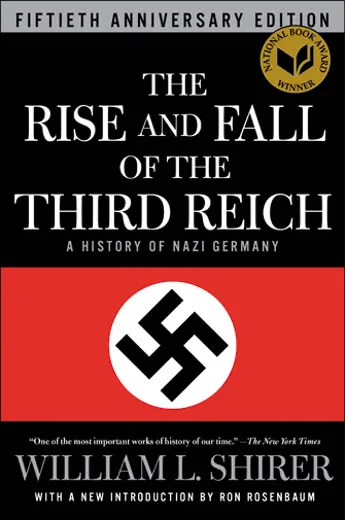
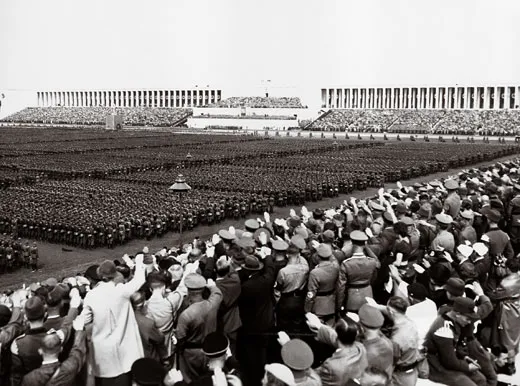
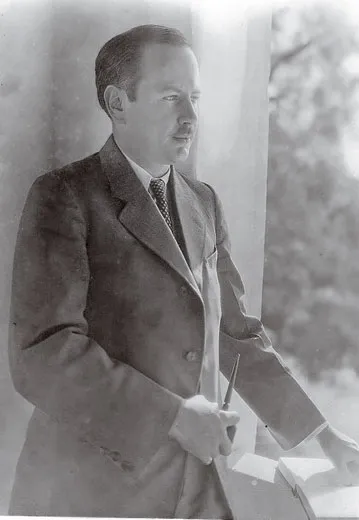

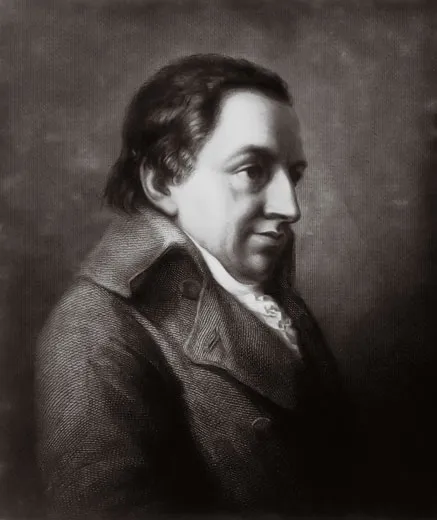
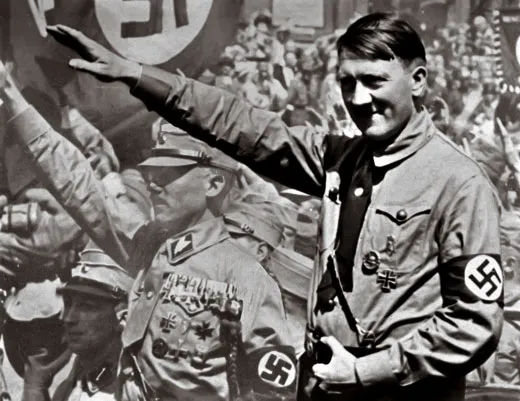
/https://tf-cmsv2-smithsonianmag-media.s3.amazonaws.com/accounts/headshot/ron-rosenbaum-240.jpg)